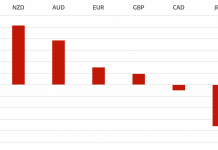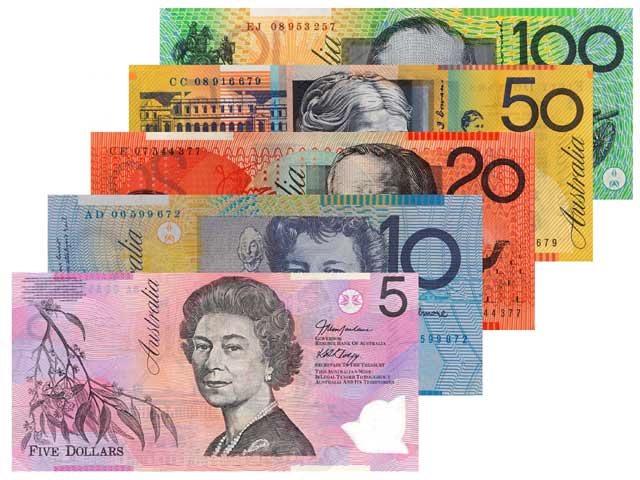
Forex Trading Fundamental Analysis Masterclass – Part 4
In this chapter of the Forex Trading Fundamental Analysis Masterclass we will be focusing in Interest Rates and their impact in trading and capital markets. There are three major major fundamental factors that affect currencies, namely interest rates, monetary policies, and market-moving economic reports. We’ll start with the most important of these – interest rates.
Interest rate trends and lending practices have been influential over four millennia of economic and trading history. Despite the accuracy of data prior to the Industrial Revolution, interest rates impacts money markets and borrowing practices in major economies and its currencies.
Therefore in a fundamental analysis approach to Forex Trading is critical to underly the analysis of interest rates assertion. Free market long–term rates of interest for any modern, industrial nation, properly charted, provide a sort of fever chart of the economic and political health of that nation and a component critical for trading and investing. Given the bulls and bears of the markets ans special the enormous volatility of rates in the 20th and 21th century, in an age of political and economic disruption and technological innovation, sometimes with prices of excess and crisis, all of these factors are reflected in massive interest rate changes and swings.
Interest Rates
Basically, the Forex market is ruled by interest rates. The interest rate is the single biggest factor in determining the perceived value of a currency, so it’s important to have an idea of how a country’s central bank goes about setting its monetary policy with regard to interest rates.
With over 4 trillions of dollars daily worth of trades just in currencies and much more managed every year in everything from Central Governments, U.S. Treasury bonds to retail mortgage-backed securities, the global and special the U.S. interest rate market is one of the largest fixed income markets in the world.
Interest Rate Markets are critical to trade in an effective way. Using the right treatment of techniques and models used in the pricing and risk management can improve the trading activity and improve results.
A sound Practical Approach to Fixed Income details the typical quantitative tools used to analyze rates markets and how this affects traders and investors worldwide. From the range of fixed income products on the cash side; the interest rate movements; and, the derivatives side of the business all of the operation of interest rates is effectively a powerful way to master fundamental analysis and special to manage a good trading activity.
A trader needs to bear in mind the following:
- Make sure that in his or hers trading emphasises the right importance of hedging and quantitatively managing risks inherent in interest rate trades to trading and investing;
- Leverage the details the common trades which can be used by traders or investors to take views on interest rates in an efficient manner, the methods used to accurately set up these trades, as well as common pitfalls and risks?providing examples from previous market stress events such as black swan events such as the financial crisis of 2008;
- Make sure that the trading activity includes exclusive access to the Interest Rate Markets sources and digital tools, such as websites and apps which includes commonly used calculations and best trade interest rates construction methods.
Interest Rate Markets helps traders to understand the structural nature of the rates markets and to develop a deeper structured framework for thinking, trading and investing about these markets currencies intuitively, rather than focusing exclusively on mathematical models.
One of the biggest factors that can influence a central bank’s decision on interest rates is the rate of inflation, itself a measure of price stability. Inflation is a steady increase in the prices of goods and services, and is a fact of life in a growing economy.
However, too much inflation can harm an economy, pricing goods and services out of the reach of the masses, and that’s why central banks are always keeping a watchful eye on inflation-related economic indicators, such as the Consumer Price Index (CPI).
In an attempt to keep inflation from getting out of hand, central banks will increase interest rates, which slows down growth and therefore the rate of inflation. The reason this works is because higher interest rates force consumers and businesses to borrow less (it becomes more expensive to do so) and save more (it’s more profitable), and this puts a dampener on economic activity.
By the same token, when interest rates decrease, consumers and businesses are more inclined to borrow (because it’s cheaper to do so), and are less likely to save (because it’s less profitable), and this boosts retail and capital spending, helping the economy to grow.
How does Interest rates affect the Forex market?
Currencies are highly dependent on interest rates because they dictate the flow of global capital into and out of a country. They’re what investors use to determine if they’ll invest in a country or go elsewhere. For example, if you had the option of putting your money into a savings account with a 3% interest rate, or another offering 1%, which would you go for?
The same principle applies to the world’s capital markets. The higher a country’s interest rate, the more likely its currency will strengthen. Currencies surrounded by lower interest rates are more likely to weaken over the longer term. The main takeaway here is that domestic interest rates directly affect the way that the market feels about one currency’s value as opposed to another.
Other articles in this series:
Forex Trading Fundamental Analysis Masterclass Part 1
Forex Trading Fundamental Analysis Masterclass Part 2
Forex Trading Fundamental Analysis Masterclass Part 3
Forex Trading Fundamental Analysis Masterclass Part 4
Forex Trading Fundamental Analysis Masterclass Part 5
Forex Trading Fundamental Analysis Masterclass Part 6
Forex Trading Fundamental Analysis Masterclass Part 7
Forex Trading Fundamental Analysis Masterclass Part 8
Forex Trading Fundamental Analysis Masterclass Part 9
Forex Trading Fundamental Analysis Masterclass Part 10
Forex Trading Fundamental Analysis Masterclass Part 11
Forex Trading Fundamental Analysis Masterclass Part 12
Forex Trading Fundamental Analysis Masterclass Part 13
Forex Trading Fundamental Analysis Masterclass Part 14
Forex Trading Fundamental Analysis Masterclass Part 15
José Ricaurte Jaén is a professional trader and Guest Editor / community manager for tradersdna and its forum. With a Project Management Certification from FSU – Panama, José develops regularly in-house automated strategies for active traders and “know how” practices to maximize algo-trading opportunities. José’s background experience is in trading and investing, international management, marketing / communications, web, publishing and content working in initiatives with financial companies and non-profit organizations.
He has been working as senior Sales Trader of Guardian Trust FX, where he creates and manages multiple trading strategies for private and institutional investors. He worked also with FXStreet, FXDD Malta, ILQ, Saxo Bank, Markets.com and AVA FX as money manager and introducing broker.
Recently José Ricaurte has been creating, and co-managing a new trading academy in #LATAM.
During 2008 and 2012, he managed web / online marketing global plan of action for broker dealers in Panama. He created unique content and trading ideas for regional newspaper like Capital Financiero (Panamá), La República (Costa Rica), Sala de Inversión América (Latinoamérica) and co-developed financial TV segments with Capital TV.
He is a guest lecturer at Universidad Latina and Universidad Interamericana de Panamá an active speaker in conferences and other educational events and workshops in the region. José Ricaurte worked and collaborated with people such as Dustin Pass, Tom Flora, Orion Trust Services (Belize) and Principia Financial Group.









































